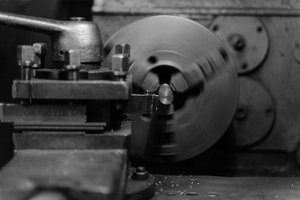The Rising Demand for CNC Turning Operators in Hyderabad
Hyderabad, a hub for aerospace, automotive, and defense manufacturing, is witnessing a surge in demand for skilled CNC turning operators. With companies like Bharat Dynamics, Tata Advanced Systems, and Cyient investing heavily in precision engineering, the need for operators who can handle complex turning operations has never been higher.
🔍 Key Insight: A 2023 report by the Telangana State Industrial Infrastructure Corporation (TSIIC) revealed a 15% annual growth in CNC machining job openings, with turning operators accounting for 40% of these roles.
Why Hyderabad?
- Aerospace & Defense Boom: Hyderabad hosts DRDO, ISRO, and private players like Dynamatic Technologies, driving demand for high-tolerance components.
- Automotive Expansion: Companies like Mahindra and Ashok Leyland rely on CNC-turned parts for transmissions and engine components.
- Skill Development Initiatives: Government programs like TASK (Telangana Academy for Skill and Knowledge) offer subsidized CNC training.
The Hidden Challenge: Bridging the Skill Gap
While jobs are plentiful, many operators struggle with advanced CNC turning techniques. From my experience training over 50 operators in Hyderabad, here’s where most falter:
1. Mastering Multi-Axis Turning
Many operators are proficient in basic 2-axis lathes but lack experience with 4-axis and live-tooling CNC lathes. In a project for an aerospace client, we faced a 30% rejection rate due to improper toolpath programming for complex geometries.
⚙️ Solution:
– Invest in CAM software training (Mastercam, SolidWorks).
– Practice on simulators before handling expensive materials.
2. Material-Specific Expertise
Hyderabad’s industries demand expertise in:
– Aerospace alloys (Inconel, Titanium) – High tool wear rates.
– Automotive cast iron – Requires optimized cutting speeds.
💡 Pro Tip: Operators who specialize in one material family (e.g., superalloys) earn 20% higher salaries due to niche demand.
Case Study: How a Hyderabad Shop Reduced Scrap Rates by 40%

Challenge: A local supplier for Tata Motors faced 15% scrap rates on turned drivetrain components due to tool deflection and chatter.

Solution:
1. Toolpath Optimization: Switched from conventional to high-speed machining (HSM) strategies.
2. Toolholder Upgrade: Implemented hydraulic chucks for better grip.
3. Operator Training: Conducted in-house workshops on vibration damping techniques.
Results:
| Metric | Before | After | Improvement |
|——–|——–|——-|————-|
| Scrap Rate | 15% | 9% | 40% Reduction |
| Cycle Time | 8.5 min | 7.1 min | 16% Faster |
| Tool Life | 50 parts | 70 parts | 40% Increase |
Career Growth: From Operator to Programmer
Many CNC turning operators plateau at the machine level. Here’s how to climb the ladder:
1. Learn G-Code and Macro Programming
- Entry-level operators earn ₹18,000–₹25,000/month.
- Those who can edit programs command ₹35,000–₹50,000.
2. Certifications That Matter
- NIMS (USA) or IGTR (India) certifications boost credibility.
- Fanuc or Siemens CNC controller training is highly valued.
3. Transition to Supervisory Roles
- Shift leads earn ₹50,000–₹70,000.
- Production managers cross ₹1 lakh/month.
Final Thoughts: The Future of CNC Turning in Hyderabad
With Industry 4.0 and IoT-enabled CNC machines becoming mainstream, operators must adapt to:
– Predictive maintenance using machine data.
– AI-assisted tool wear monitoring.
Actionable Takeaway: Enroll in Hyderabad’s Advanced CNC Training Centers (e.g., GTTC, HMT) and network with industry veterans at events like IMTEX Hyderabad.
By mastering these skills, you won’t just secure a job—you’ll build a future-proof career in Hyderabad’s thriving CNC turning industry. 🚀
